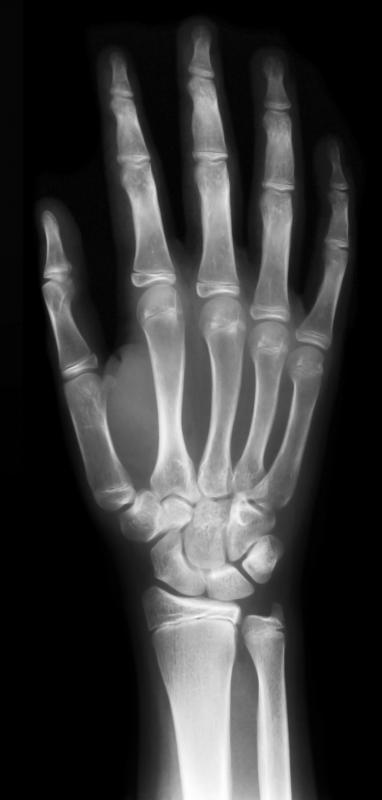At WiseGEEK, we're committed to delivering accurate, trustworthy information. Our expert-authored content is rigorously fact-checked and sourced from credible authorities. Discover how we uphold the highest standards in providing you with reliable knowledge.
How Do I Choose between Being a Radiologist, X-Ray Technician and X-Ray Technologist?
Radiologist physicians, X-ray technologists and X-ray technicians are all careers involved in the radiology — or imaging — field of medicine. Despite these careers' common subject matter and shared work environment, the length and degree of required educational preparation for these positions can vary enormously. To qualify for certification as a radiology technician or a radiology technologist, the minimum amount of education generally required is an associate's degree, usually obtained through a community college or a vocational training facility. A radiologist, on the other hand, is a medical doctor who has completed a bachelor's degree, medical school and a three to four-year long residency study. Thus, a student must take many factors into consideration when choosing whether to become a radiologist, an X-ray technologist or an X-ray technician, including grades, the ability to be admitted to necessary degree programs, financial resources or the availability of financial aid, and the time he is willing to invest in obtaining one or more degrees.
There are some experienced X-ray technicians and technologists without degrees who have received certification and are qualified to practice under state or national "grandfather clauses," which means they do not need to complete current degree requirements as they were already practicing in the field. New students, however, overwhelmingly begin their careers after completing a field-appropriate associate's degree and a certification examination sponsored by the national organization overseeing their specific practice. In the US, all states require licensure or certification based upon organizational or state-sponsored examinations. Radiology technicians are the most basic of the three radiology careers and require the least education, training and specialization. These healthcare workers position patients, protect themselves and patients against undue exposure to radiation and operate X-ray machines to obtain the clearest image possible.

X-ray technologists obtain associate's or bachelor's degrees in their field before beginning their careers. Like technicians, X-ray technologists position patients and operate imaging equipment per a written order of a radiologist. Technologists, however, have more training than technicians and have experience with — if not specialization and additional certification in — a much wider variety of imaging equipment. An X-ray technologist not only operates general X-ray machines, but also works with computed tomography (CT) scans, magnetic resonance imaging (MRI), fluoroscopy, mammography and other types of specialized equipment. Technologists are eligible for certification by examination by the US national accreditation board, The American Registry of Radiologic Technologists®.

Of these three options, becoming a radiologist requires the greatest investment of time, money and effort. A radiologist is physician who has completed a bachelor's degree, medical school, and a residency program in radiology. These specialized and board-certified physicians are a well-paid group and enormous growth is expected in this field. In the US, radiologists must be licensed and board-certified by examinations specific to the state in which they practice.
AS FEATURED ON:
AS FEATURED ON:













Discuss this Article
Post your comments